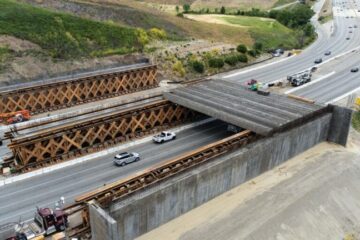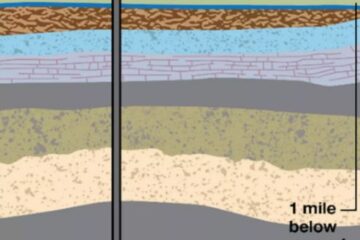School trash audit uncovers treasure
Unopened food, tons of paper and recyclables could translate to dollars
Source of this article: The Thousand Oaks Acorn, November 15, 2012
More than $200,000 in grants will be used to reduce the carbon footprint of 28 local schools.
The grants from the California Department of Resources Recycling and Recovery were awarded to the City of Thousand Oaks and Conejo Valley Unified School District in July.
As part of a two-year initiative, Joanie Burns, the district’s newly appointed recycling coordinator, helped perform waste audits at nine CVUSD schools last month. The audits were meant to show how much money the district could save if schools used better waste management practices.Enlisting the help of city employees, school custodians and students, Burns sorted through trash and recycling piles accumulated in a 24-hour period to count how many recyclable or reusable items ended up in the garbage.If the nine schools—including two high schools, one middle school, five elementary schools and one K-8 school—audited were to exchange their redeemable materials (cans and bottles) for money, they would reap an estimated $19,558 in funds over the course of one school year, according to Burns’ findings.
At Thousand Oaks High, the largest school audited, enough redeemable items were found in the trash to bring in an estimated $4,923 a year.
In close second, Redwood Middle School had $4,365 in redeemable materials.
“Simply by doing something like reducing the frequency of trash collection from five days a week to three days a week, schools could save thousands of dollars. And recycling is free,” Burns said.
From her analysis, the recycling coordinator found that the nine schools audited threw away 174 pounds of paper a day, equaling about 31,000 pounds a year.
Sycamore Canyon School, a combined middle school and elementary school and the site of one of the audits, threw away 38 pounds of paper in a single day’s worth of trash, a figure that translates to almost 7,000 pounds in the course of a 180-day school year.
In most of the audits, Burns found small quantities of batteries, toner cartridges and other specialdisposal items.
Some administrators found the results unsettling.
Redwood Middle School’s audit on Oct. 19 was an “eyeopener,” said Claudia Caudill, the dean of students.
“We had more than 27 pounds of unopened food,” she said. “There were sandwiches, fruit, juice containers, bags of chips (thrown in the trash). . . . It was surprising.”
“Working with teenagers, we assume they eat a lot,” Caudill added. “It makes me wonder how they sustain their ability to focus.”
Caudill said the audit has inspired students, faculty and staff to increase their recycling efforts.
“The Associated Student Body is spearheading our recycling efforts from here on out,” Caudill said. “We’ve ordered recycling containers and signs so the kids know what to put in what receptacles.”
Lou Lichtl, the principal of TOHS, was likewise surprised by the piles of uneaten food revealed during an audit at his school—a whopping 21 pounds.
“It was unbelievable,” he said.
In an effort to be more environmentally conscious, Lichtl is employing his student government to enforce new recycling standards.
The school held an on-campus e-waste drive on Nov. 10 and 11.
In charge of the drive was James Park, the girls’ head volleyball coach.
“It went really well,” Park said. “We had seven truckloads of e-waste, which translates to about 70,000 pounds.”
Making strides toward greener, more cost-effective practices, many of the schools will receive new recycling containers and signs, reducing students’ confusion as to what items go where.
And although health codes make donating the uneaten food impossible, Burns said measures can be taken to reduce the waste.
“This is important for parents to be aware of so they can adjust what they are packing in their kids’ lunches,” she said.
“It will help students develop smart habits,” she said. “Teaching them to think before putting something in the trash? It’s going to lead to a more sustainable society.
“It’s a way to save money,” she added. “Instead of asking people to give money, this is found money right in the garbage.”
![68p1[1]](http://www.venturacountytrails.org/WP/wp-content/uploads/2012/11/68p11-300x205.jpg)


